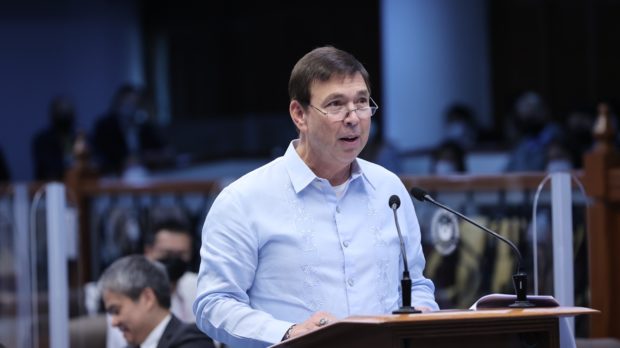2024 budget needs P4 billion daily in borrowings – Recto
MANILA, Philippines — Deputy Speaker Ralph Recto on Sunday said the proposed national budget of P5.767 trillion for 2024 would translate to an average daily spending of P15.8 billion, of which only P11.7 billion would be supported by revenues with the balance to be covered by borrowings.
“To fully grasp the dimensions of the budget, you have to compute it on a daily basis, to fully appreciate the enormity of both spending and borrowings,” said Recto in a statement.
He added that based on the gap between projected spending and revenues, P4 billion will have to be borrowed “every 24 hours.”
The Bureau of Internal Revenue and the Bureau of Customs are projected to respectively collect only P8.3 billion and P2.7 billion daily, or a total of over P11 billion a day.
“If it is based on actual disbursements, P3.7 billion of daily expenditures need to be filled up,” he added.
Article continues after this advertisementRecto pointed out that while the “art of budget marketing perfected by all governments” focuses on what will be spent, “what is downplayed is the enormous money required to finance it.”
Article continues after this advertisement“Programs that dazzle are highlighted while muting the cost, a great portion of which are paid by debts left to the next generation to pay,” the Batangas lawmaker said, adding that payment for interest alone on the growing public debt would be around P1.8 billion a day next year.
But he observed, “It doesn’t give the whole picture because only the interest payment is included in the national budget. The payment for the principal, the amortization, that’s automatically appropriated and is not in the national budget.”
He pointed out that if the principal amortization requirement of P3.4 billion a day is added to the interest payment of P1.83 billion, the real debt service expenditures would be about P5.2 billion daily.
“That’s only debt payment,” he said, referring to the scheduled interest payments of P670 billion and P1.24 trillion in principal amortization in 2024, and added that it’s “separate from the amount yet to be borrowed.”
Recto said gross borrowings next year, to finance the deficit, debt, and development, had been set at P2.46 trillion, or “about P6.7 billion daily.” This also represents about 42 percent of the budget.
Pursuing ‘transformation’
The projected borrowings, however, had been planned out by President Ferdinand Marcos Jr.’s economic team to support the approved National Expenditure Program that seeks to sustain the country’s economic growth coming out of the devastating COVID-19 pandemic.
“Guided by our Medium-Term Fiscal Framework, the proposed national budget will continue to prioritize expenditures outlined in the administration’s 8-Point Socioeconomic Agenda and cater to the objectives of Philippine Development Plan 2023-2028,” Budget Secretary Amenah Pangandaman had said.
The proposed 2024 budget was crafted “as an indispensable step” toward the overarching goal to attain upper-middle-income status and cut the country’s poverty rate to 9 percent by 2028, Pangandaman said.
At P5.768 trillion, the proposed budget is equivalent to 21.8 percent of the country’s gross domestic product (GDP) or economic output and is 9.5 percent higher than the P5.268-trillion budget for 2023.
“It shall continue to reflect our commitment to pursue economic and social transformation to address the scarring effects of the pandemic, as well as the impact of inflation, by prioritizing shovel-ready investments in infrastructure projects, investments in human capital development, and sustainable agriculture and food security, among others,” Pangandaman said in a statement.
To support this year’s expenses, the national government has set a P2.2-trillion borrowing program, 12 percent higher than this year’s level.
Debt-to-GDP ratio
Borrowings are regularly resorted to by governments around the world to finance their expenditures geared toward growth.
Credit watchers, however, monitor the level of debt compared to the GDP. As a rule of thumb, a debt-to-GDP ratio of 60 percent is deemed “comfortable,” which means that there is little risk of the country defaulting on its obligations.
As of the first quarter of this year, the debt-to-GDP ratio was slightly beyond this level at 61 percent, but already significantly below the 63.5 percent recorded in the first quarter of 2022 with the hangover from the massive spending needed to respond to the COVID-19 public health and economic crises.
The Marcos economic team aims to bring the closely watched debt-to-GDP ratio to less than 60 percent by 2025 then further down to 51.1 percent by the end of Marcos’ term in 2028.
